Rank Species | Genus Orobanche Higher classification Orobanche | |
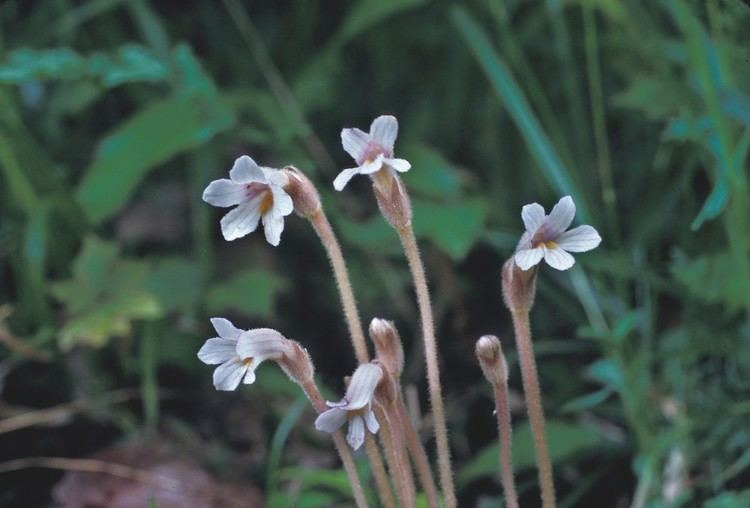 | ||
Similar Orobanche, Orobanchaceae, Orobanche fasciculata, Orobanche californica, Orobanche ludoviciana | ||
Orobanche uniflora, commonly known as one-flowered broomrape, one-flowered cancer root, ghost pipe or naked broomrape, is an annual parasitic herb. The "broom" might refer to the plant's shape while "rape" might refer to the lumps that are on its roots. It is native to much of North America, where it is a parasitic plant, tapping nutrients from many other species of plants, including those in the Asteraceae and Saxifragaceae families and in the genus Sedum. The name "Orobanche" can be translated to "vetch-strangler" and "uniflora" can be translated to "single-flower".
Contents
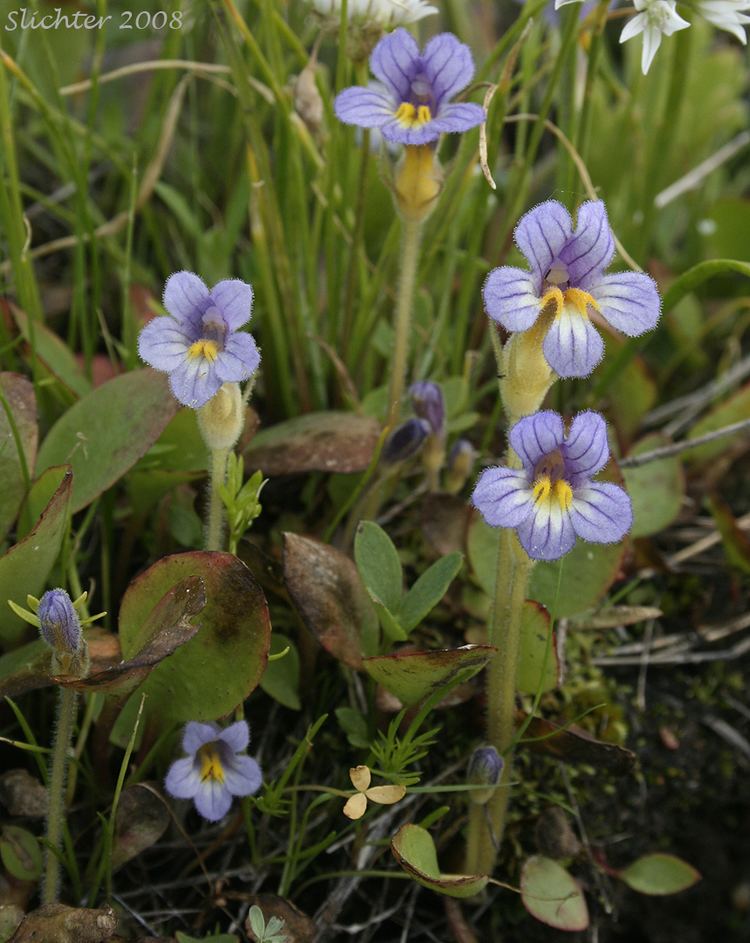
Description
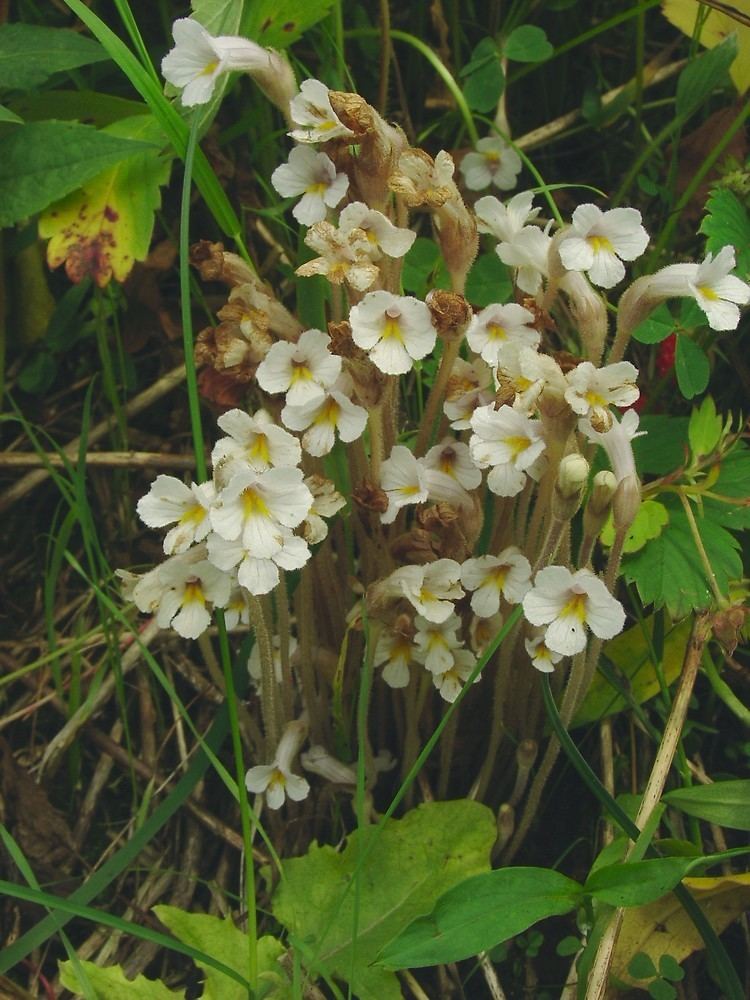
It grows to a height of five centimeters, and has short (up to 3 centimeter) scaly leaves. The flowers grow singly on 5–15 centimetres (2.0–5.9 in) stalks and may be up to 3.5 centimetres (1.4 in) long. The corolla is violet to yellow-brown, two-lipped, finely fringed with five similar lobes. The species has hairless bracts and purple or white flowers with five petals. The main stem is under the ground, with only the pedicels being seen and each pedicel containing only one flower. The stems are grayish tan. No leaves are on the plant. It reproduces from its seeds, which is produced from fruit that has two sections. Many seeds are produced from the plant's fruit.
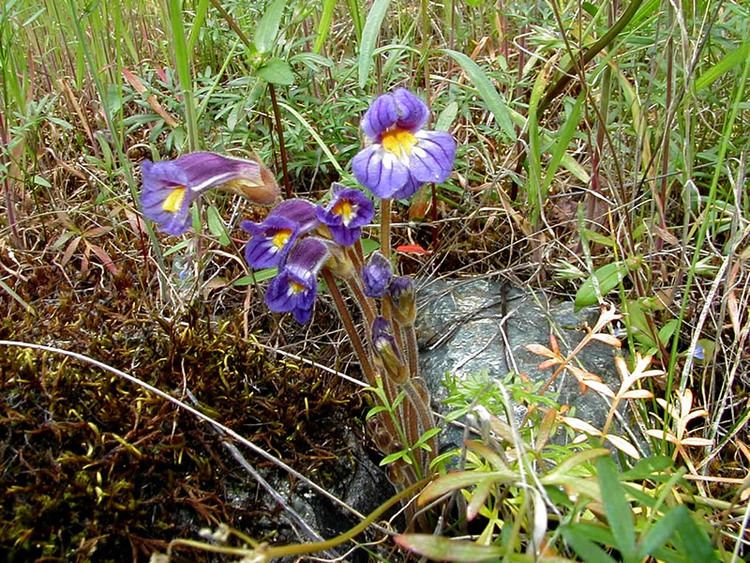
The plant is parasitic on other plants' roots, often on the flowering plant genus Sedum which are also known as stonecrops. It does not produce chlorophyll, gaining its nutrients, such as carbohydrates from other plant species. Due to not producing chlorophyll, the plant does not produce any green portions. It is not agreed upon by botanists whether the plant's flowers are pollinated by insects of if they are pollinated by the plant itself. The life expectancy of the species is unknown.
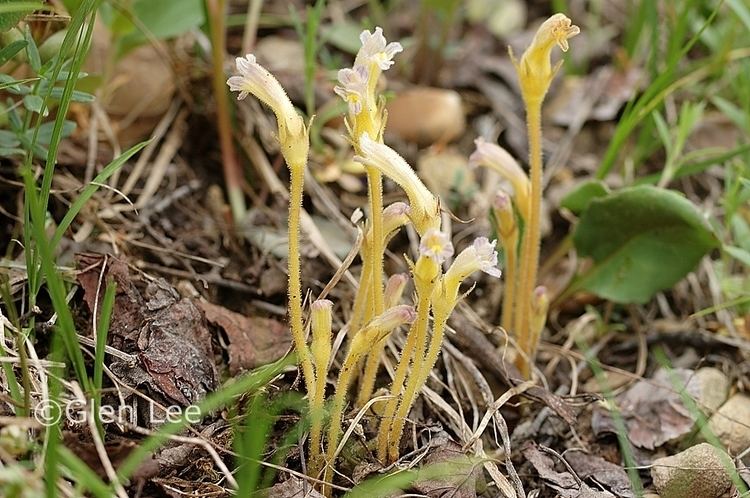
Orobanche uniflora closely resembles Orobanche fasciculata. The two species can be differentiated by their bracts and number of flowers. O. uniflora's bracts are hairless while O. fasciculata's bracts are hairy. The flowers of O. uniflora has one to three flowers on each stem branch while O. fasciculata has three to ten flowers per stem branch. O. fasciculata has flowers that are pinkish to creamy-white, unlike O. uniflora which is tinged with violet.
Habitat
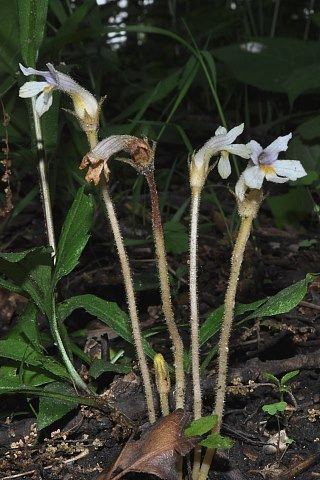
It can be found in woods, thickets, and mountains as well as by stream banks. and is widespread. Unlike other species in the Orobanche genus, Oranbanche uniflora is largely a species that can be commonly found in forests. The species has been found surviving in both the sunlight and shaded areas, as well as in a variety of different types of soil. Its habitat is restricted to places where there are plenty of host plants to get nutrients from. It might be difficult for this species to survive in an area where its host plants are sparsely found.

A specimen is contained within the botany department of the Smithsonian National Museum of Natural History and another specimen has been photographed at Hells Canyon National Recreation Area. It is considered rare or vulnerable in 17 states and five Canadian provinces. The species was once labeled as being a Special Concern in Minnesota in 1984, later being changed to endangered in 2013. When it was originally listed as a Special Concern in Minnesota, only seven populations were known to exist.
